Exit Xincheng Station and turn left, take "Bus 302" or the "Taiwan Tourist Shuttle" park bus and enjoy a relaxed self-guided cultural trip of the Taroko Gorge!
On the occasion of the 60th anniversary of the Central Cross-Island Highway, the Taroko National Park Headquarters has set up image displays at four scenic spots along the highway section in the park under the theme of "Central Cross-Island 60". Visitors are taken on a trip across history to witness the complex and difficult construction of the Central Cross-Island Highway.
The Central Cross-Island Highway crosses the Central Mountain Range from Dongshi District in Taichung to Taroko in Hualien, and is the first highway in Taiwan linking the western and eastern parts of the country. The highway was originally built for defense purposes, to house veterans, and to facilitate transportation and develop resources between eastern and western Taiwan. However, as times changed, the Central Cross-Island Highway was given more functions and roles, such as with the establishment of Taroko National Park in 1986, which attracted domestic and foreign tourists.
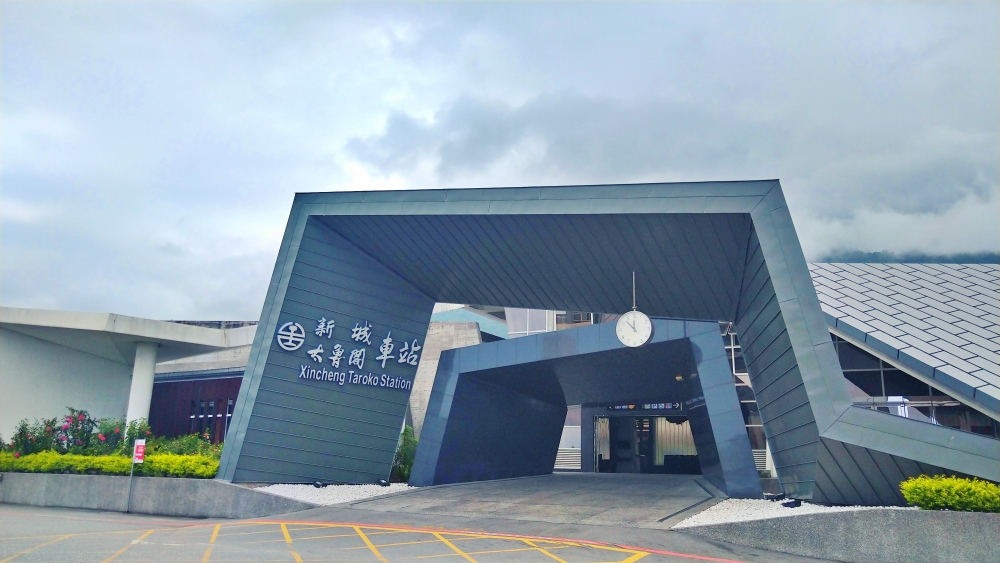
or the "Taiwan Tourist Shuttle" park bus and enjoy
a relaxed self-guided cultural trip of the Taroko Gorge!
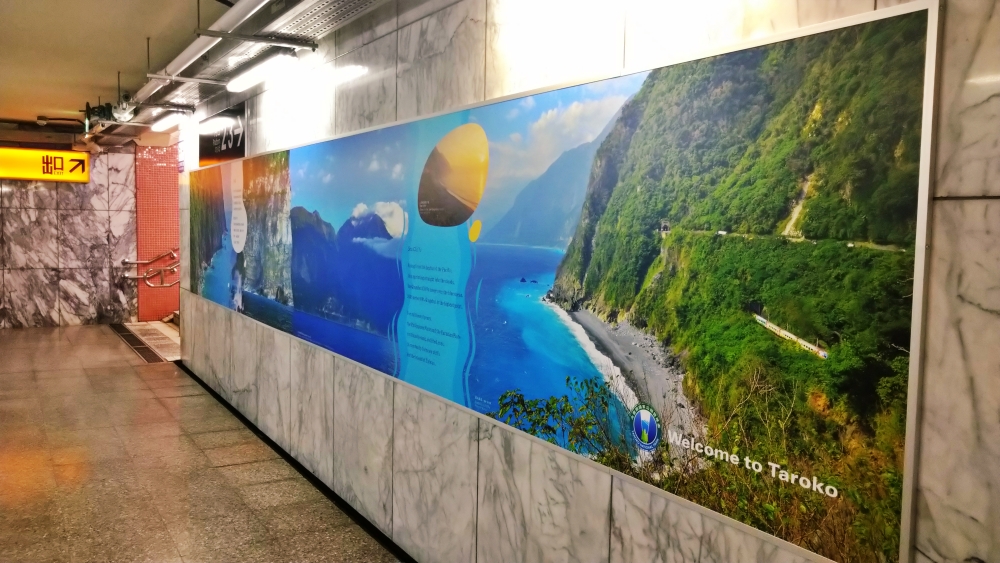
between Xincheng Station, and you can immediately appreciate
the style of Taroko Gorge when you take the train.
Memorial Image 1: Location Where Construction and Road Opening of the Central Cross-Island Highway Began: Archway of Taroko
The Archway of Taroko is the location where the construction of the Central Cross-Island Highway began on July 7th, 1956, and also where the road was opened to vehicles on May 10th, 1960. The large archway standing over the road, with the center plaque reading "East-West Cross-Island Highway", is an iconic landmark before entering the Taroko Gorge.
The old photos from 60 years ago depict the opening of the road at the time to vehicles, serving to show the precious historical significance of the Archway of Taroko.
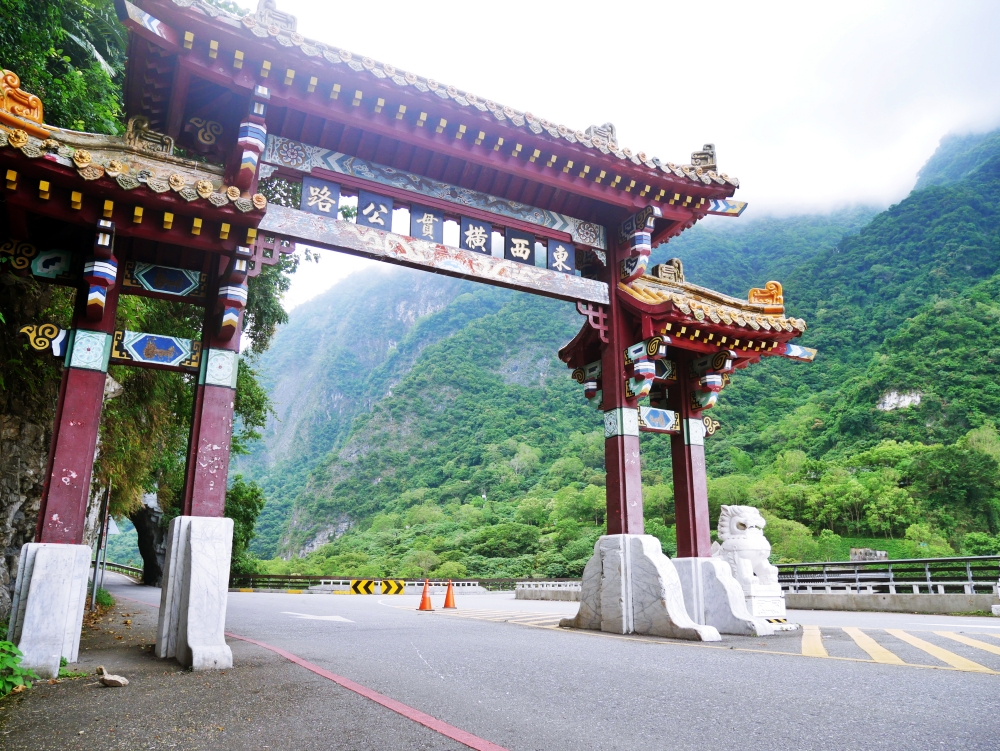
Cross-Island Highway Began: Archway of Taroko.
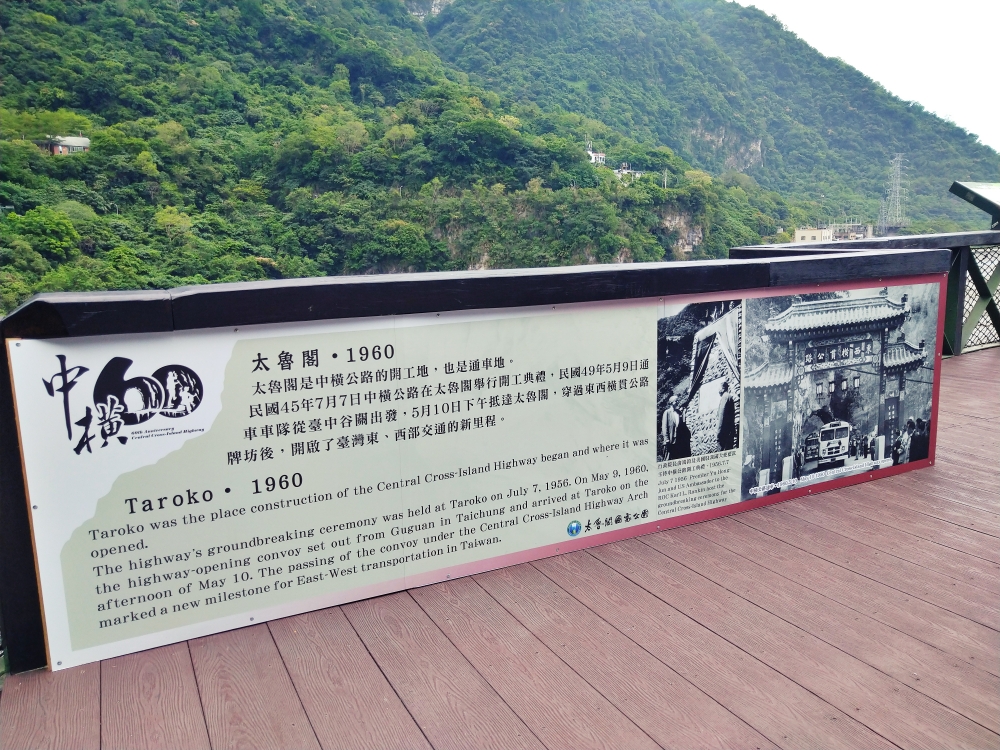
of the road at the time to vehicles.
Memorial Image 2: Location in Memory of Chief Jin Heng Who Died in the Line of Duty: Jinheng Park
Jinheng Park, which can be found at the end of the Swallow Grotto (Yanzikou) Trail, was founded in commemoration of Chief Jin Heng, who unfortunately fell down the ravine and died while inspecting the bridge construction at the time. Later, the newly-built bridge was named Jinheng Bridge and Jinheng Park was established next to the bridge.
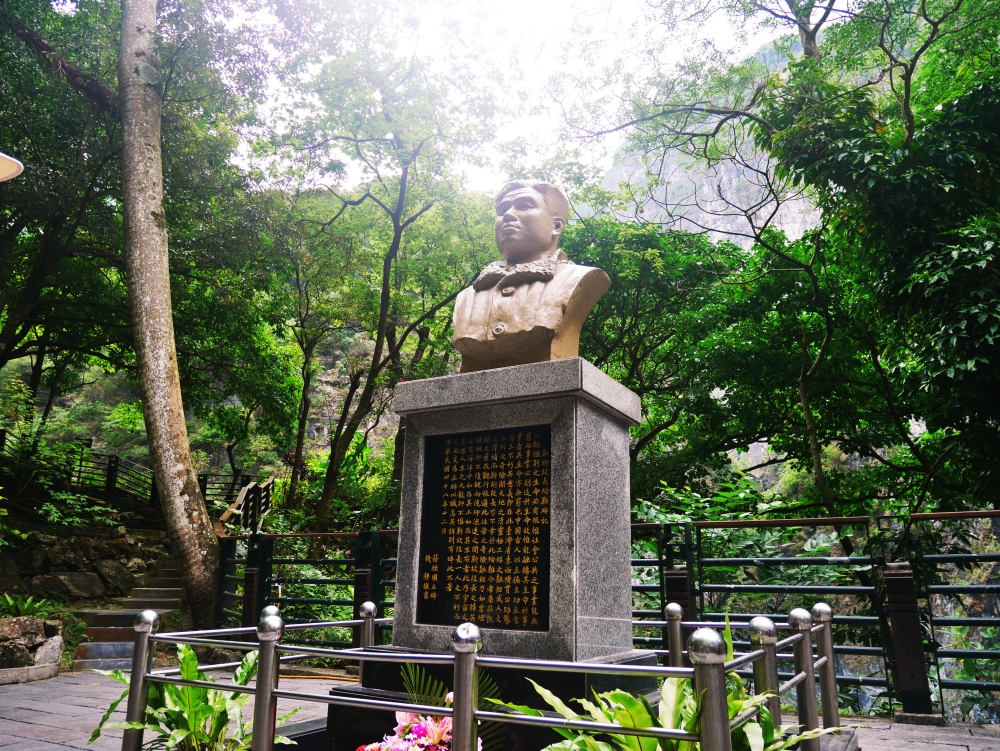
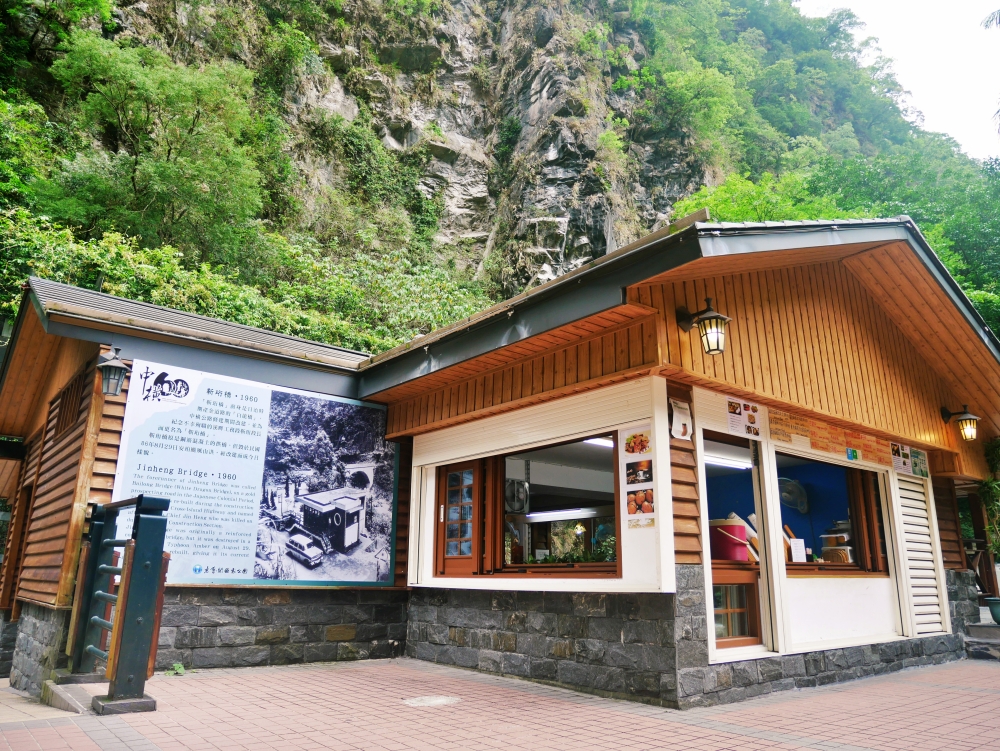
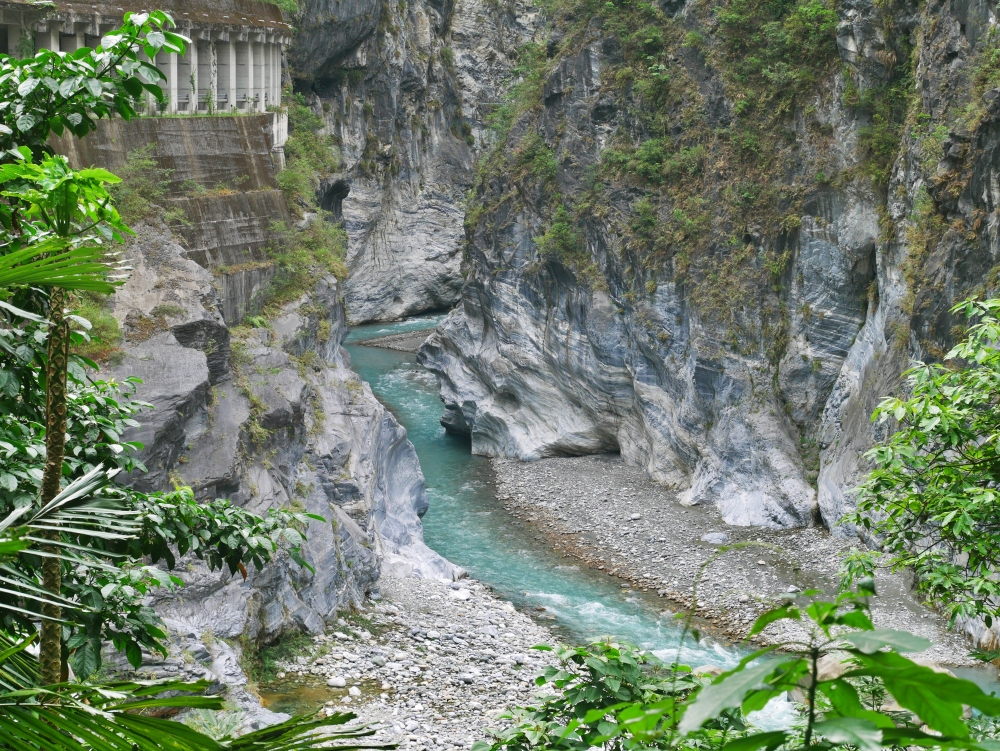
in the Line of Duty: Jinheng Park.
Memorial Image 3: A Recreation Area Developed Due to the Opening of the Central Cross-Island Highway: Tianxiang
The Truku (Taroko) people originally called this place "Tpedu", which referred to the Formosa palm. After the Central Cross-Island Highway was opened, a statue of the Chinese Southern Song dynasty poet, Wen Tianxiang, was set up here, and the area was renamed "Tianxiang".
As the area is a large river terrace, Tianxiang is well-connected for traffic and well-equipped with various facilities, and it has become a recreation area in the Taroko Gorge.
Here can be found the "Central Cross-Island Highway Story Hall", with six theme categories based on the development history of the Central Cross-Island Highway, to help visitors learn more about the development of the highway.
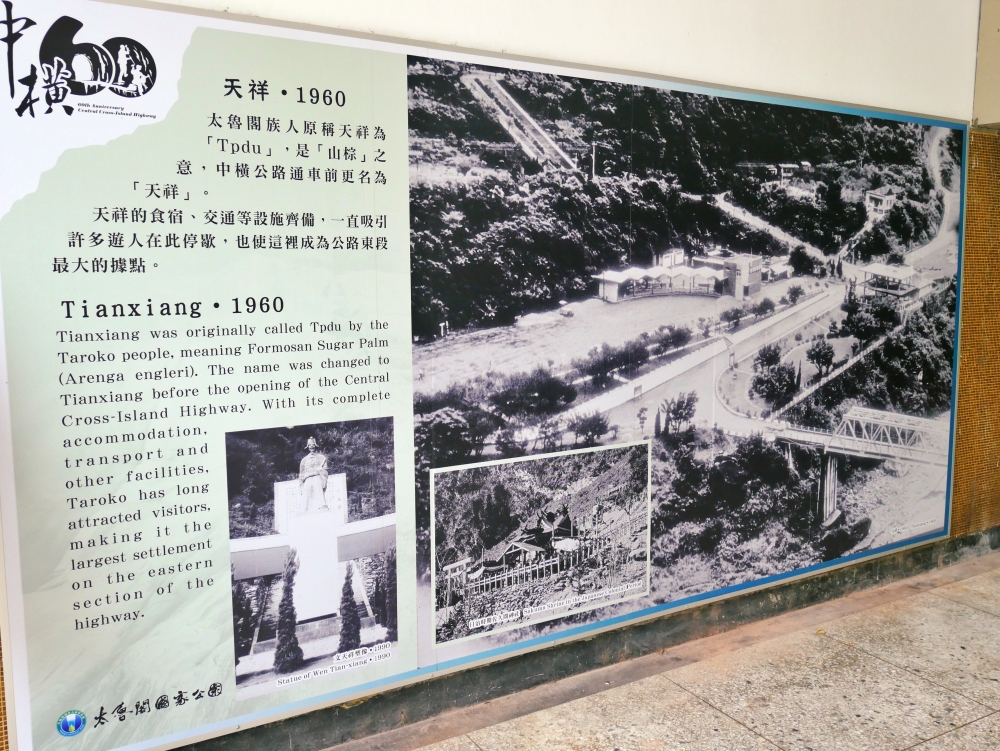
of the Central Cross-Island Highway: Tianxiang.
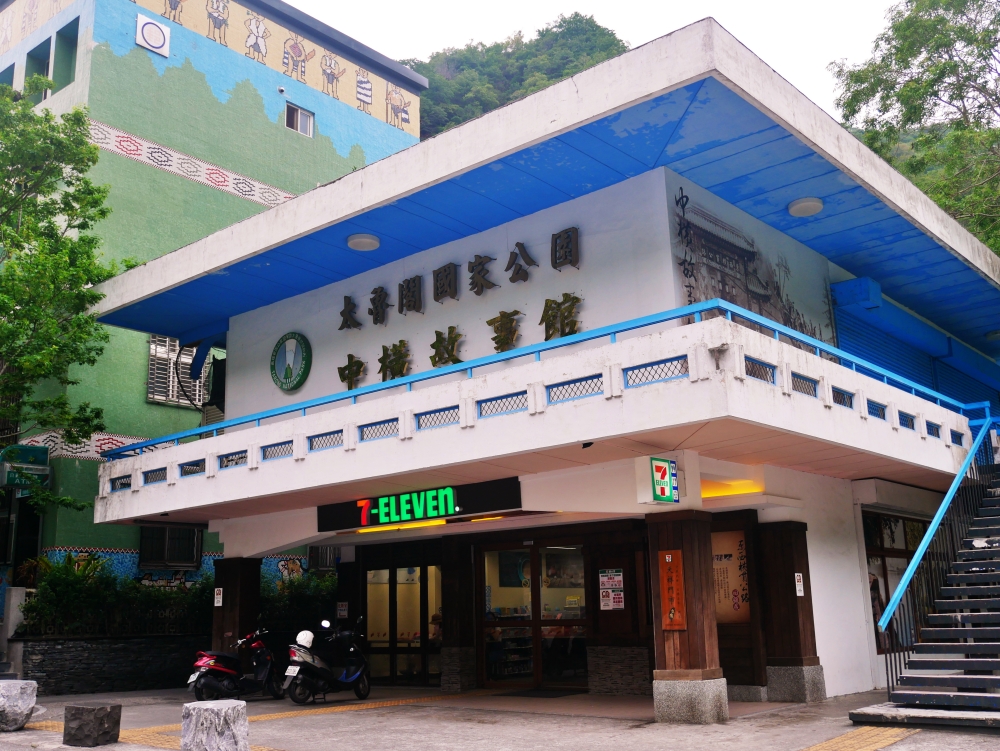
Story Hall", with six theme categories based on the
development history of the Central Cross-Island Highway.
Scenic Spot 4: A Shrine in Memory of Those Who Built the Highway: Changchun (Eternal Spring) Shrine
This site was built to commemorate the personnel who died in the construction of the Central Cross-Island Highway. The welling spring next to the "Changchun (Eternal Spring) Shrine" flows all year round, forming a waterfall that has been named "Changchun Falls". This is a landmark of special significance on the Central Cross-Island Highway.
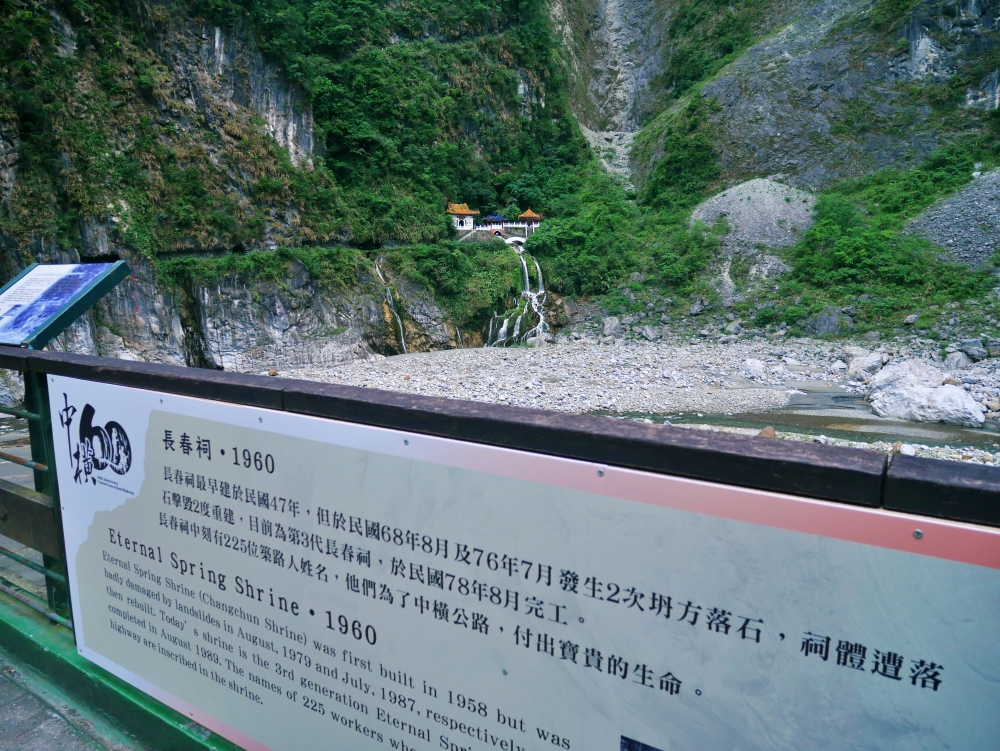
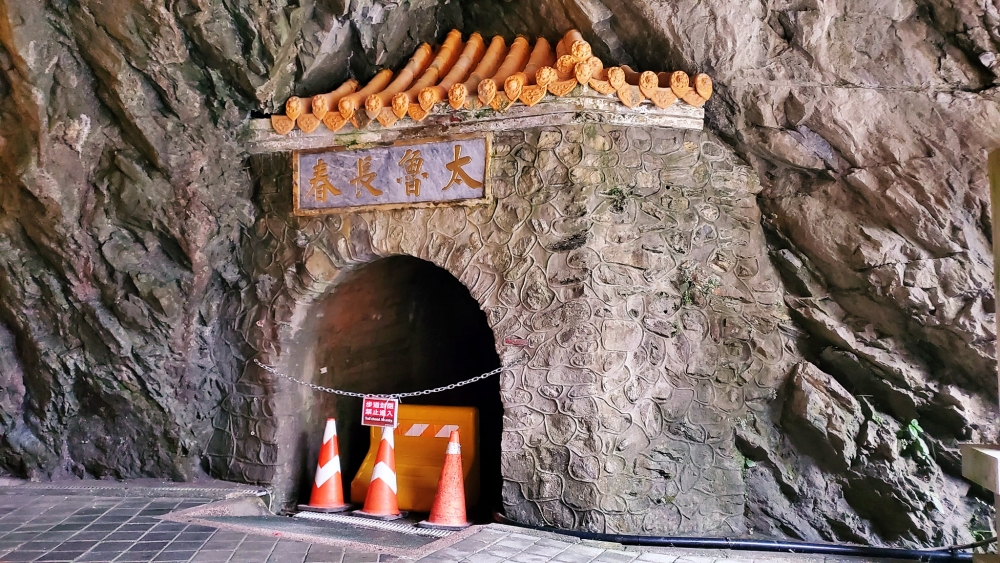
the Highway: Changchun (Eternal Spring) Shrine
The Central Cross-Island Highway is not only a road for management, conservation research, and environmental education in the Taroko National Park, but it is also a road for visitors to enter the breathtaking Taroko Gorge, experience nature, and help wash away their cares.


![Text size [Small]](/media/system/images/font_small.jpg)
![Text size [Medium]](/media/system/images/font_normal.jpg)
![Text size [Large]](/media/system/images/font_big.jpg)





